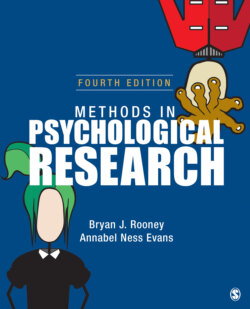Читать книгу Methods in Psychological Research - Annabel Ness Evans - Страница 97
На сайте Литреса книга снята с продажи.
Logistic Regression.
ОглавлениеSuppose you were interested in predicting whether a young offender would reoffend. You measure a number of possible predictor variables, such as degree of social support, integration in the community, job history, and so on, and then follow your participants for 5 years and measure whether they reoffend. The predictor variables may be continuous, but the criterion variable is discrete; they reoffend or they don’t. When we have a discrete criterion variable, we use logistic regression. Just as we used a combination of the predictor variables to predict the criterion variable in multiple regression, we do the same thing in logistic regression. The difference is that instead of predicting a value for the criterion variable, we predict the likelihood of the occurrence of the criterion variable. We express this as an odds ratio—that is, the odds of reoffending divided by the odds of not reoffending. If the probability of reoffending is .75 (i.e., there is a 75% chance of reoffending), then the probability of not reoffending is .25 (1 − .75). The odds of reoffending are .75/.25, or 3:1, and the odds of not reoffending are .25/.75, or .33. We calculate the odds ratio of reoffending versus not reoffending as .75/.33, or 2.25. In other words, the odds of reoffending are two and a quarter times higher than those of not reoffending.
